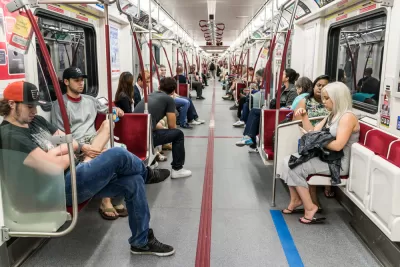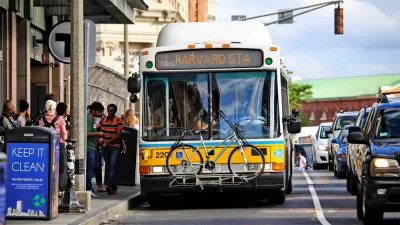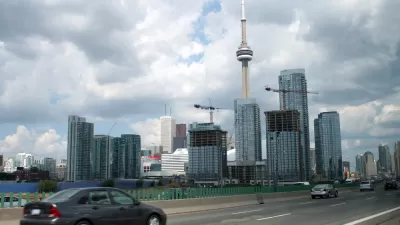The population in Canada will increase substantially in the future, and transit planning is crucial to ensuring that cities thrive.

Canada’s population is slated to grow in the coming decades, with one projection estimating 48.8 million to 56 million Canadians by 2050. These residents are largely going to live in the country’s big cities, which means many more commuters. But are Canadian cities going to be ready for this growth?
"If we want to raise the quality of life in Canada’s cities, rather than choking on our growth, we will need better planning, so that cities build up more and sprawl out less. As part of that, we need a lot more of the key piece of infrastructure that makes city life possible: mass transit," argues an editorial in The Globe and Mail.
In the Greater Toronto Area alone, the addition of 4.6 million new residents is projected by 2046. "Try to imagine millions of new commuters, all trying to drive to work on the GTA’s already gridlocked highways. It can’t be done."
Canadian cities have not made the transit investments and improvements needed to accommodate this coming surge in the population, as aging and inadequate systems can barely keep up with present-day needs. "Unless municipalities, provinces and the federal government prepare for our nation’s future as a bigger and more urban country, by planning, funding and actually building public transit, and a lot more of it, the quality of life in Canada’s big cities is at risk."
FULL STORY: Canada’s cities are about to add millions of new residents. They can’t all drive to work

Alabama: Trump Terminates Settlements for Black Communities Harmed By Raw Sewage
Trump deemed the landmark civil rights agreement “illegal DEI and environmental justice policy.”

Study: Maui’s Plan to Convert Vacation Rentals to Long-Term Housing Could Cause Nearly $1 Billion Economic Loss
The plan would reduce visitor accommodation by 25% resulting in 1,900 jobs lost.

Why Should We Subsidize Public Transportation?
Many public transit agencies face financial stress due to rising costs, declining fare revenue, and declining subsidies. Transit advocates must provide a strong business case for increasing public transit funding.

Paris Bike Boom Leads to Steep Drop in Air Pollution
The French city’s air quality has improved dramatically in the past 20 years, coinciding with a growth in cycling.

Why Housing Costs More to Build in California Than in Texas
Hard costs like labor and materials combined with ‘soft’ costs such as permitting make building in the San Francisco Bay Area almost three times as costly as in Texas cities.

San Diego County Sees a Rise in Urban Coyotes
San Diego County experiences a rise in urban coyotes, as sightings become prevalent throughout its urban neighbourhoods and surrounding areas.
Urban Design for Planners 1: Software Tools
This six-course series explores essential urban design concepts using open source software and equips planners with the tools they need to participate fully in the urban design process.
Planning for Universal Design
Learn the tools for implementing Universal Design in planning regulations.
Smith Gee Studio
Alamo Area Metropolitan Planning Organization
City of Santa Clarita
Institute for Housing and Urban Development Studies (IHS)
City of Grandview
Harvard GSD Executive Education
Toledo-Lucas County Plan Commissions
Salt Lake City
NYU Wagner Graduate School of Public Service





























